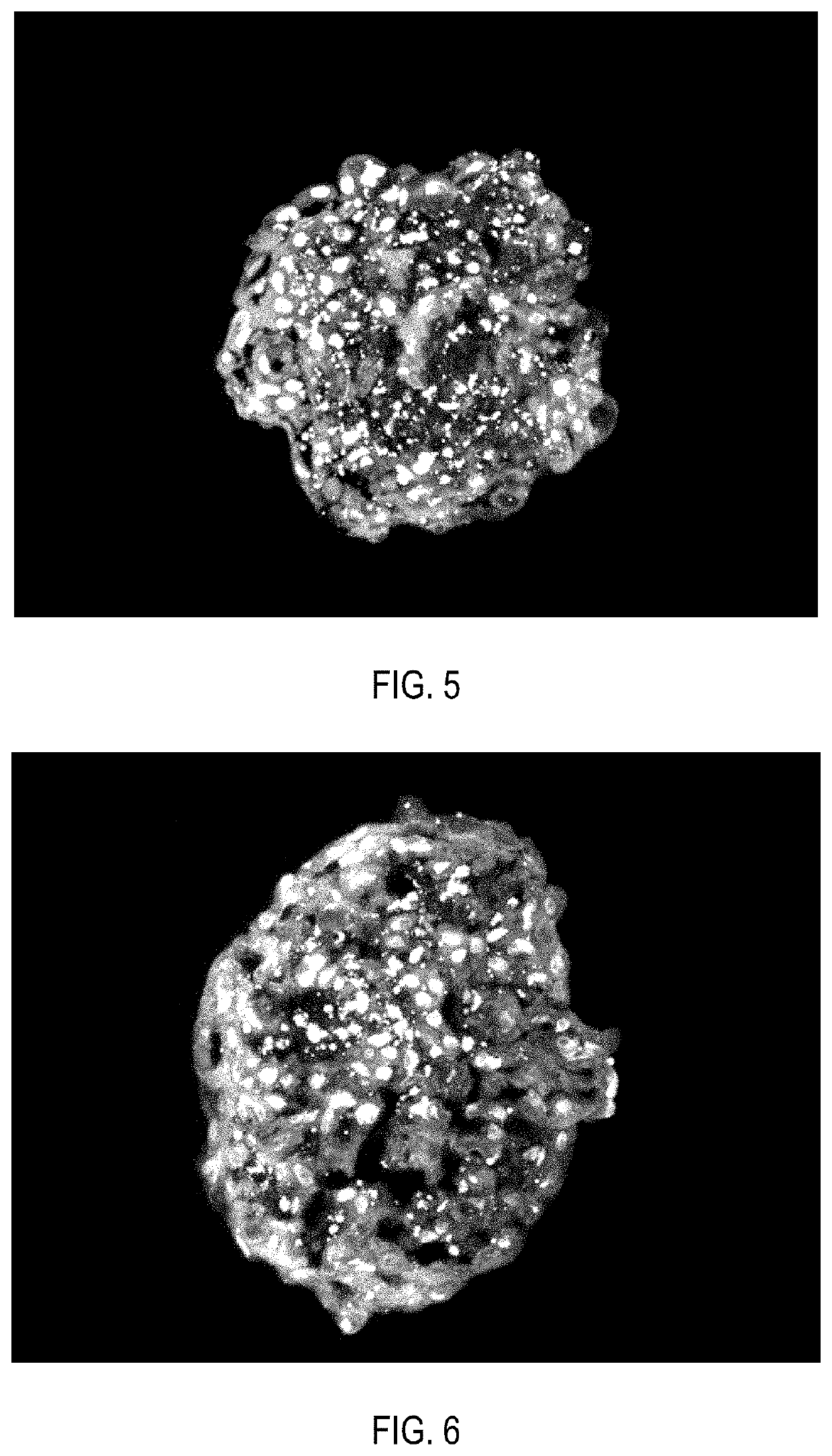Cell product of mammalian insulin-producing cells and methods for using the same
a technology of insulin-producing cells and cell products, which is applied in the field of regenerative medicine and cell technologies, can solve the problems of limiting the use of insulin-producing cells, reducing the effectiveness of insulin supply to the body, so as to reduce the discontinuity of blood glucose concentration and the effect of blood glucose level
- Summary
- Abstract
- Description
- Claims
- Application Information
AI Technical Summary
Benefits of technology
Problems solved by technology
Method used
Image
Examples
example 1
[0115]Pancreatic Differentiation of Human Salivary Gland Progenitor Epithelial Cells
[0116]Human submandibular salivary gland bioptate was obtained from a male donor of 37 years old during a planned operation on removal of salivary gland part due to sialolithiasis. The volume of glandular tissue of the bioptate was close to 2 cm3. The bioptate was transferred under sterile conditions to Petri dish with DMEM / F12 1:1 medium (Gibco, USA) and gentamicin 40 μg / ml (PanEco, Russia). All further manipulations were carried out under sterile conditions that meet GMP requirements.
[0117]The epithelial tissue of salivary gland was mechanically separated from fat and mesenchymal tissues by sterile instruments under binocular and shredded to small pieces (about 1-5 mm3 in size) by scalpel. The tissue pieces were washed twice with phosphate-buffered saline, span down by centrifugation for 5-10 minutes at 0.8-1.5 thousands rpm, incubated for 30-60 minutes at 37° C. in the presence of 2-4 mg / ml collag...
example 2
[0141]Pancreatic Differentiation of Human Liver, Pancreas, Small Bowel and Stomach Epithelial Progenitor Cells
[0142]Human liver, pancreas, small bowel and stomach bioptic samples were extracted in the course of planned surgery to remove organ parts. 0.5-5 cm3 bioptic samples were aseptically transferred into Petri dish containing DMEM / F12 1:1 medium (Gibco, USA) and 40 μg / ml gentamycin (PanEco, Russia). All further manipulations were carried out in sterile conditions compliant with GMP requirements.
[0143]Organ biotic samples were washed thrice with phosphate-buffered saline, mechanically divided by sterile tools (scalpel, forceps) into 1-5 mm3 fragments. Then tissue fragments were pelleted during 5-10 minutes at 0.8-1.5 thousand revolutions per minute and incubated with addition of 2-4 mg / ml IV type collagenase (Gibco, USA) in DMEM / F12 1:1 medium (Gibco, USA) containing 1-4 mM of glutamine (Invitrogen, USA) (total—1 ml of solution per 0.5 cm3 of tissue). Tubes with tissue fragments ...
example 3
[0151]Cultivation of Cell Product in Conditions of 3D Cultivations
[0152]Cell product of insulin-secreting cells, produced as described in Example 1, after pancreatic differentiation was washed twice with Versene solution (PanEco, Russia), then incubated in EDTA solution with addition of 0.05% trypsin (Gibco, USA) for 5 minutes. Trypsin solution was added in amount of 1 ml per 25 cm2 of a culture flask surface area. Then the cells were washed from trypsin by phosphate-buffered saline, pelleted at 200 g for 5-10 minutes and resuspended in the same medium used for the second stage of pancreatic differentiation. The medium was added in amount of 20 μl of medium for every 5,000 cells. 20 μl of the cell suspension were pipetted on the Petri dish lid, then the dish was closed and the cells were aseptically incubated as hanging drops at 37° C. and 5% CO2 for the next 5 days. As a result, cells inside the droplets formed aggregates in the form of spheroids of 250-500 μm in size.
[0153]Immunoc...
PUM
 Login to View More
Login to View More Abstract
Description
Claims
Application Information
 Login to View More
Login to View More - R&D
- Intellectual Property
- Life Sciences
- Materials
- Tech Scout
- Unparalleled Data Quality
- Higher Quality Content
- 60% Fewer Hallucinations
Browse by: Latest US Patents, China's latest patents, Technical Efficacy Thesaurus, Application Domain, Technology Topic, Popular Technical Reports.
© 2025 PatSnap. All rights reserved.Legal|Privacy policy|Modern Slavery Act Transparency Statement|Sitemap|About US| Contact US: help@patsnap.com



